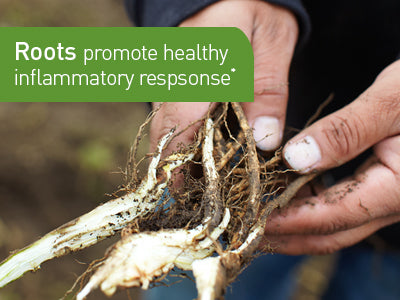Echinacea is one of the most popular herbs for supporting the natural defenses.* It has a long history of traditional use, and multiple studies have found that, taken at onset, the herb effectively promotes a rapid response to immune challenges.* Importantly, though, not all Echinacea is the same! To get the results you're looking for, it's important to choose the right preparation for the right indication.

Depending on the species, the part of the plant used, the season of harvest, and the method of extraction, the constituents of Echinacea - as well as its actions - vary dramatically. Gaia Herbs offers several products featuring Echinacea, formulated for distinctly different needs. We have the unique advantage of organically growing Echinacea just a few yards from our analytical laboratory and extraction facility, allowing us to harvest the herb at the peak of activity for the compounds we need.
NIH-Funded Research Yields New Discoveries
Gaia Herbs was awarded a grant by the National Institutes of Health to study the various constituents of Echinacea, where they are found in the plant, and their different actions. The research team made some important discoveries over the course of the five-year study. It had been known for some time that the two most important active constituents in Echinacea are polysaccharides and alkylamides, and both were thought to be immune-stimulating.* However, Gaia's research team discovered something different. Alkylamides do not stimulate immunity; rather, they support a healthy inflammatory response.*

This may explain why preparations made from Echinacea root, where alkylamides are concentrated, are effective at helping people feel better at the onset of an immune challenge, when support of a healthy inflammatory response is greatly needed.* On the other hand, preparations made from Echinacea aerial parts, where polysaccharides gather, promote a healthy immune system, so they are more appropriate for fortifying the natural defenses throughout the season.*
How Gaia Uses Echinacea
Taking advantage of what we have learned about how different parts of the plant have different actions, Gaia Herbs formulated two Echinacea-containing products from this research: Quick Defense® and Whole Body Defense®.
Quick Defense Liquid Phyto-Caps® features Echinacea root harvested in the fall and supercritically extracted, delivering the highest concentration of alkylamides - the constituents most effective at modulating inflammation.
Whole Body Defense Liquid Phyto-Caps, on the other hand, features Echinacea aerial parts harvested in the spring and water-extracted, offering high levels of polysaccharides - the constituents that stimulate immune response.* It is intended for long-term use. Astragalus, Larch and Maitake complement Echinacea's ability to support daily wellness throughout the season of immune challenges.*
Echinacea is one of the most effective and research-backed natural remedies for immune health, supported by multiple human clinical studies.* The key to getting the most out of Echinacea is knowing which preparation to use for which indication - something Gaia Herbs makes easy.
